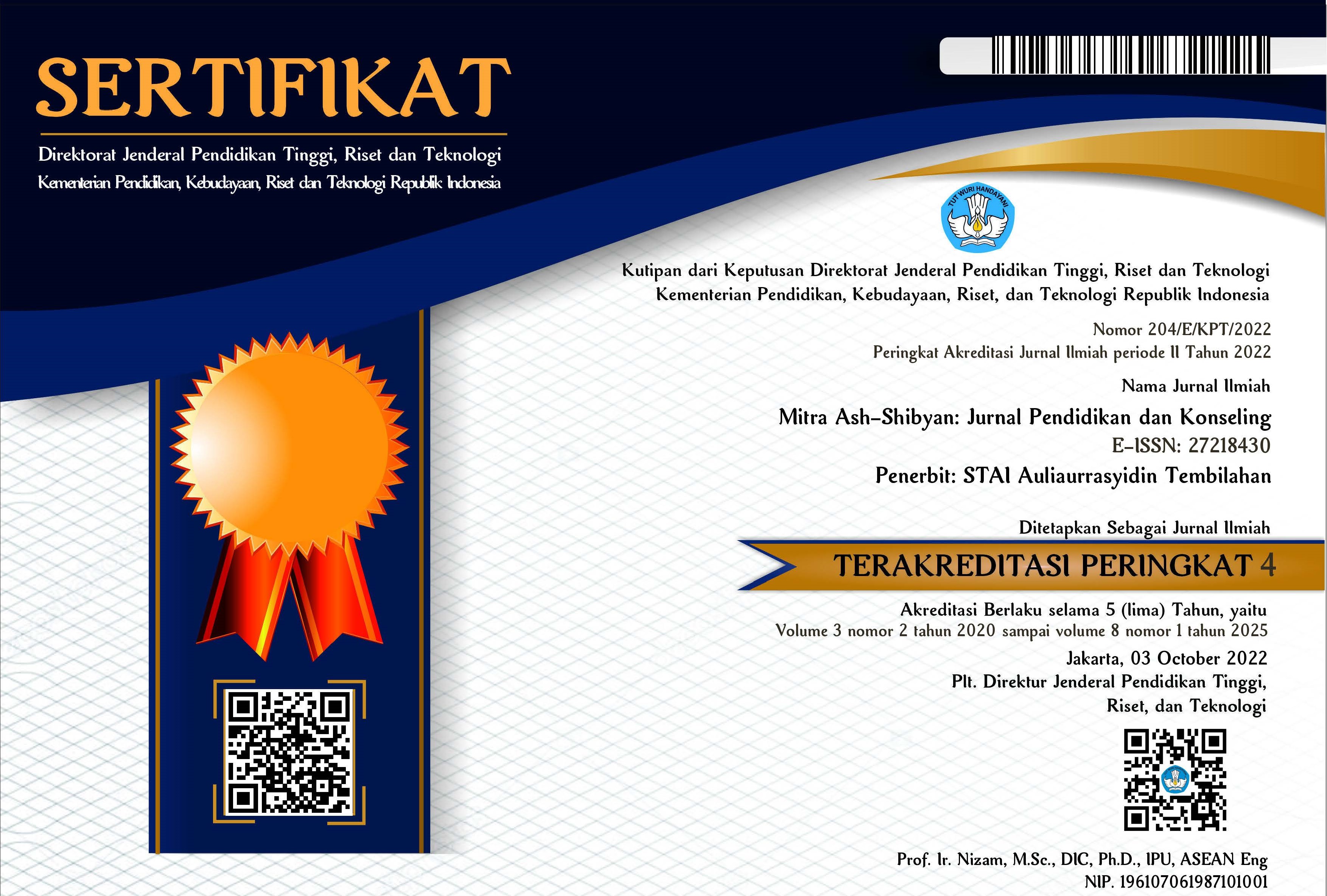Mengenalkan Warna Melalui Model Pembelajaran Picture and Picture Pada Anak Usia Dini
DOI:
https://doi.org/10.46963/mash.v4i02.233Keywords:
Introducing colors, Picture and picture, Early childhoodAbstract
Cognitive abilities include various things, one of which is the ability to recognize colors. However, the ability to recognize colors is less often ruled out by educators and parents. This can be seen from learning that pays more attention to early reading and arithmetic skills. In fact, the ability to recognize colors is a very important aspect of children's brain development. This research was conducted in order to see the role of picture and picture learning in stimulating children to recognize colors. This research is quantitative research using a quasi-experimental method with one group time-series test. The data obtained were analyzed using a regression test to see the effect of the treatment given. The results showed a significance value of 0.00 which was smaller than 0.05, which means the picture and picture learning model has a significant effect on the ability to recognize colors in early childhood.
Downloads
References
Brunk, L., & Moller, P. (2019). Do children prefer colored plates?. Food Quality and Preference, 73, 65-74.
Dowd, N. E. (2018). Introduction, in Reimagining Equality: A New Deal for Children of Color. Reimagining Equality: A New Deal for Children of Color, 18-10.
Erviana, R., Ahmad, K. I., & Sari, N. P. (2019). Developing Cognitive Ability to Matching Numbers and Symbol Using a Combination of Models, Methods, and Media Learning. Journal of K6 Education and Management, 2(4), 271-282.
Febriana, Putri. (2012). Mengenal Warna, Bentuk, Ukuran, dan Tempat. Jakarta: PT. TransMedia
Grandgeorge, M., & Masataka, N. (2016). Atypical color preference in children with autism spectrum disorder. Frontiers in psychology, 7, 1976.
Harvey, D. Y., & Schnur, T. T. (2016). Different loci of semantic interference in picture naming vs. word-picture matching tasks. Frontiers in psychology, 7, 710.
Hodayati, Sri., Robingatin., & Saugi, Wildan, (2020). Meningkatkan Kemampuan Mengenal Warna Melalui Kegiatan Mencampur Warna di TK Kehidupan Elfhaluy Tenggarong. Yaa Bunayya: Jurnal Pendidikan Anak Usia Dini, 4(1), 23-37
Lanna, L. C., & Oro, M. G. (2019). Touch gesture performed by children under 3 years old when drawing and coloring on a tablet. International Journal of Human-Computer Studies, 124, 1-12.
Lee, C. H., Jin, S. H., & Lee, W. H. (2016). A Study of Psychotherapy Plan through Game Graphics Focused on Color Preference of Children. International Journal of u-and e-Service, Science and Technology, 9(7), 287-298.
Lopatovska, I., Hatoum, S., Waterstraut, S., Novak, L., & Sheer, S. (2016). Not just a pretty picture: visual literacy education through art for young children. Journal of Documentation.
Macdonald, R., Brandt, S., Theakston, A., Lieven, E., & Serratrice, L. (2020). The Role of Animacy in Children's Interpretation of Relative Clauses in English: Evidence from Sentence–Picture Matching and Eye Movements. Cognitive science, 44(8), e12874.
Marchak, K. A., Bayly, B., Umscheid, V., & Gelman, S. A. (2020). Iconic Realism or Representational Disregard? How Young Children and Adults Reason about Pictures and Objects. Journal of Cognition and Development, 1-23.
Murni, S., & Rachmayani, R. (2019). The Cognitive Aspect Development of Matching Numbers Symbols in Children. Journal of K6 Education and Management, 2(4), 283-291.
Pradina, Y. A., & Hastuti, W. D. (2017). The Effect of Picture and Picture Learning Model towards Science Outcomes for Students with Hearing Impairment in the Class VII. Journal of ICSAR, 1(2), 145-149.
Raj, D., & Ganapathy, D. (2019). Childrens preference toward color of compomer fillings. Drug Invention Today, 12(9).
Rapisa, Dewi R. (2019). Program Latihan Koordinasi Sensorimotorik Bagi Anak Usia Dini dan Anak Berkebutuhan Khusus. Yogyakarta: Penerbit Deepublish
Suci, S. H. A., Rosyidah, E., Asitah, N., Aini, N., Murni, A. W., Anam, F., ... & Kuraesin, A. D. (2018, November). Learning from Picture and Picture Action Research: Enhancement of Counting Ability on Division of Numbers for Primary School Students. In Journal of Physics: Conference Series (Vol. 1114, No. 1, p. 012044). IOP Publishing.
Storkel, H. L., Komesidou, R., Fleming, K. K., & Romine, R. S. (2017). Interactive book reading to accelerate word learning by kindergarten children with specific language impairment: Identifying adequate progress and successful learning patterns. Language, speech, and hearing services in schools, 48(2), 108-124.
Downloads
Published
Issue
Section
License
Authors who publish with this journal agree to the following terms:
1. Copyright on any article is retained by the author(s).
2. The author grants the journal, right of first publication with the work simultaneously licensed under a Creative Commons Attribution shareAlike 4.0 International License that allows others to share the work with an acknowledgment of the work’s authorship and initial publication in this journal.
3. Authors are able to enter into separate, additional contractual arrangements for the non-exclusive distribution of the journal’s published version of the work (e.g., post it to an institutional repository or publish it in a book), with an acknowledgment of its initial publication in this journal.
4. Authors are permitted and encouraged to post their work online (e.g., in institutional repositories or on their website) prior to and during the submission process, as it can lead to productive exchanges, as well as earlier and greater citation of published work.
5. The article and any associated published material is distributed under the Creative Commons Attribution-ShareAlike 4.0 International License







2.png)



